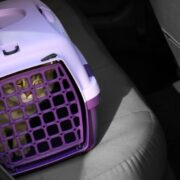All dog breeds have adorable paws. Aside from how cute they look, there’s actually a lot for dog parents to learn from dog paw anatomy.
Here’s everything you need to know about your dog’s feet from their dewclaws and paw pads to why they smell like Fritos.
The basics of dog paw anatomy
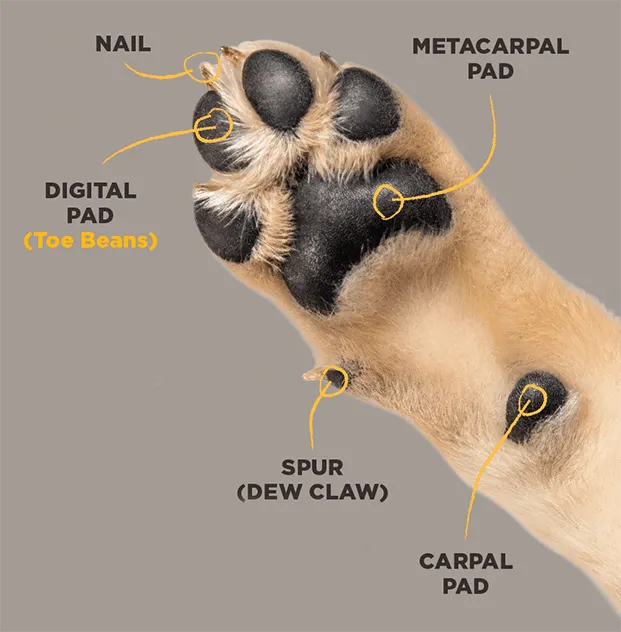
Dog paws are made up of five main parts:
- Claws
- Digital pads
- Metacarpal pad
- Dewclaw
- Carpal pad
Each part of your dog’s paw serves a purpose. Your dog’s nails, for example, are adapted for providing traction while they run as well as for digging with their front paws. The metatarsal bones connect your dog’s ankle to its toes.
Your dog’s digital and metacarpal pads are not just squishy boop buttons, but are fatty tissues (adipose) that protect the joints and bones of the paw by acting as shock absorbers. They are also thick in order to protect your dog’s paws from rough surfaces.
The carpal pad, on the other hand, is only found on the forelimbs/front legs, not the hind legs. It works like a brake to maintain balance and aid dogs in coming to a full stop when running or jumping.
Not all dogs have dewclaws.
According to DVM Jennifer Coates of PetMD, some dewclaws are attached by bone, and some are attached by the skin. Dewclaws only attached by skin do not really serve any purpose. Dewclaws attached by bone and can make contact with the ground are used for holding toys for chewing and for extra wrist support.
Fun fact: Cat feet also have dewclaws and use them for climbing.
Fun Fact #1: Dogs Sweat Through Their Paws
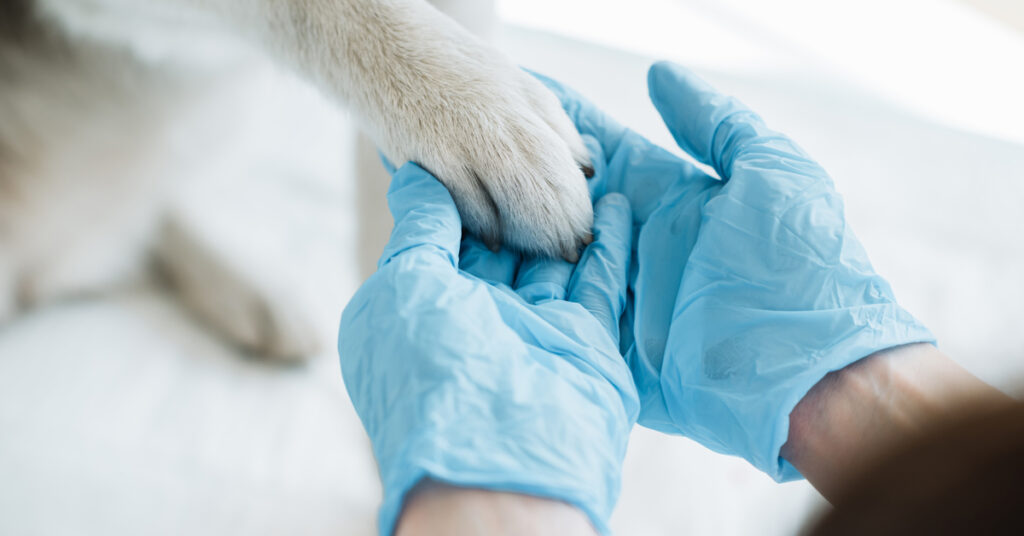
If you have ever wondered if dogs sweat, they do! Just not from where you’d expect.
Dogs sweat through their paws. In combination with panting, the sweat glands in their paws help to keep them cool. Sweaty paws can also help with traction.
Fun Fact #2: They Smell Like Fritos for a Reason
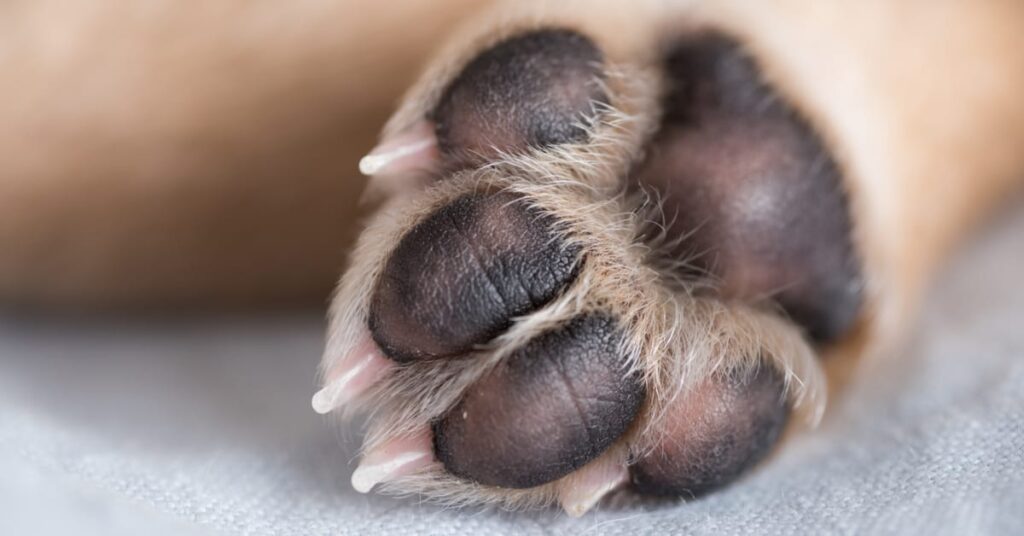
Your dog’s paws smell like corn chips because they contain normal, everyday bacteria. According to Hampton Veterinary Hospital, it’s usually from Proteus or Pseudomonas, both of which are naturally present in the environment.
Combine that bacteria with your dog’s sweaty paws and you’ve got Fritos!
Fun Fact #3: Some Breeds Have ‘Hare Feet’

Dogs with hare feet have two elongated central toenails.
A dog that has hare feet doesn’t mean they are adept at the bunny hop. Rather, they are used for speed in slender running breeds like Greyhounds, whippets, and Borzois.
Fun Fact #4: Webbed Feet Aren’t Just for Swimming
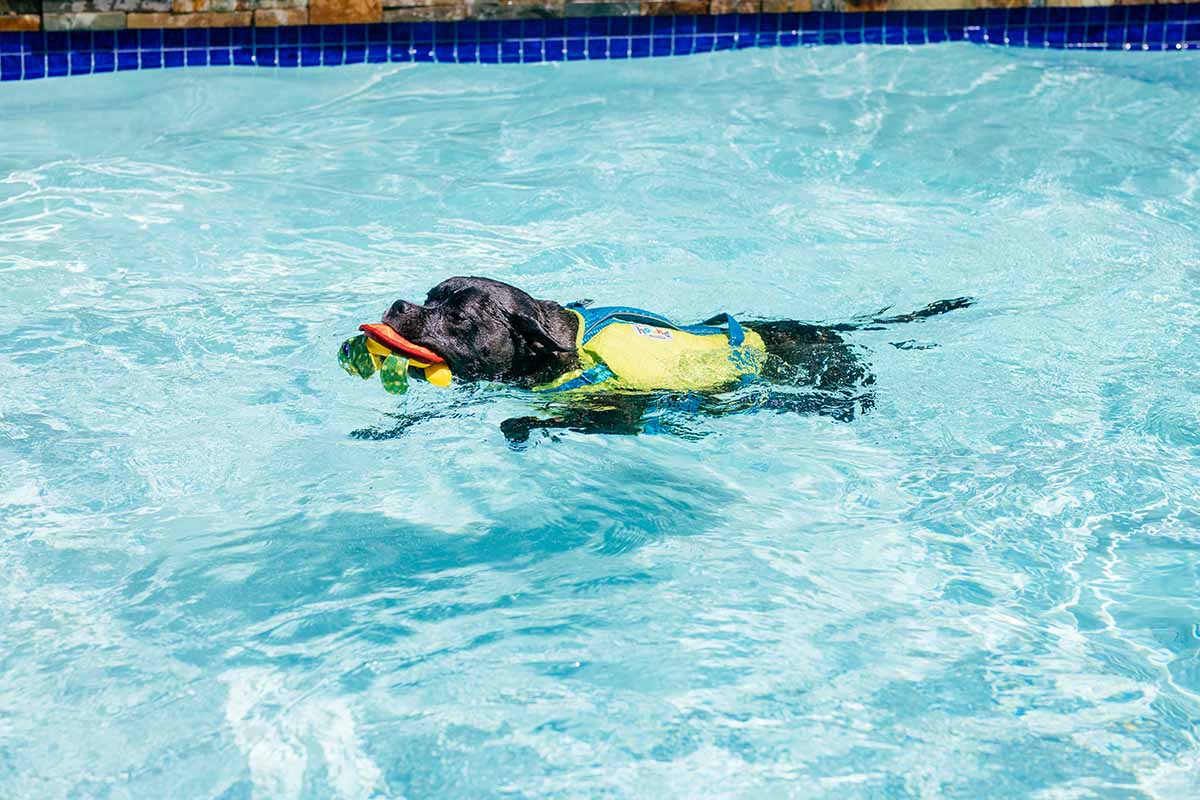
Everyone knows that webbed feet are for swimming. Breeds like labradors, Newfoundlands, and Doberman pinschers have webbed feet.
However, they are also useful for walking through muddy terrain, trudging through the snow in cold weather, and digging, especially for hunting dogs like pointers, Portuguese water dogs, retrievers, Akitas, terriers, and dachshunds.
Fun Fact #5: They Can Tell You a Lot About Your Dog’s Health
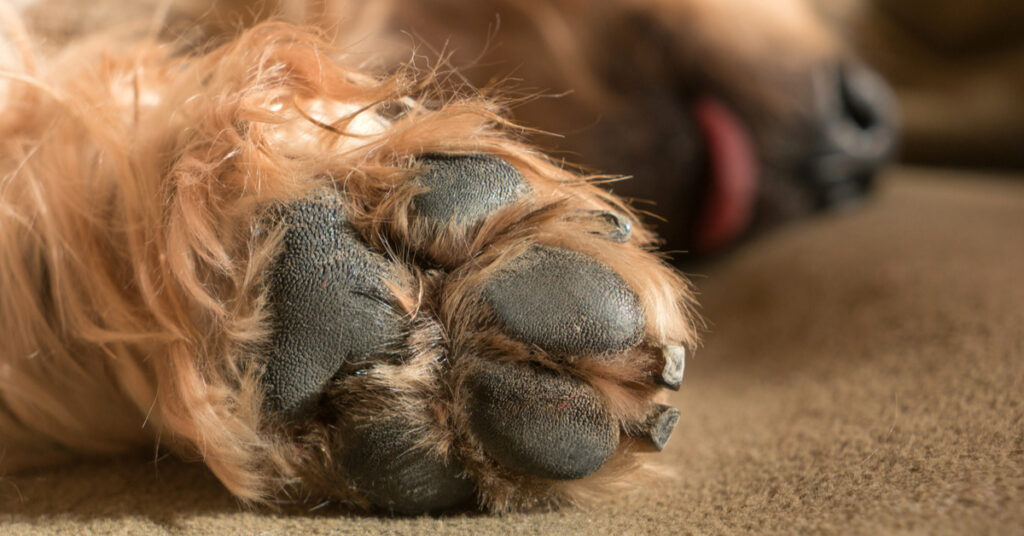
Watch your dog’s body language carefully. Does your dog obsessively chew or lick its paws? This is a major sign of stress and anxiety.
It’s important to get your pup checked out by a vet or veterinary behaviorist if this is the case. Monitor your dog’s claws, all of your dog’s paw pads (especially the metatarsal pad) to ensure an infection doesn’t set in.
Allergies & Skin Conditions
In addition to signaling stress, your dog’s toes can tell you about any possible allergies or infections they are suffering from.
The skin around your dog’s legs and paws is one of the most prominent parts of a dog that are affected by allergies. Check for any unusual redness, dry, flaky skin, abrasions, blisters, or abnormal growths.
If your pup’s paws are both excessively oily and dry, they could be over-producing keratin.
Nail injury
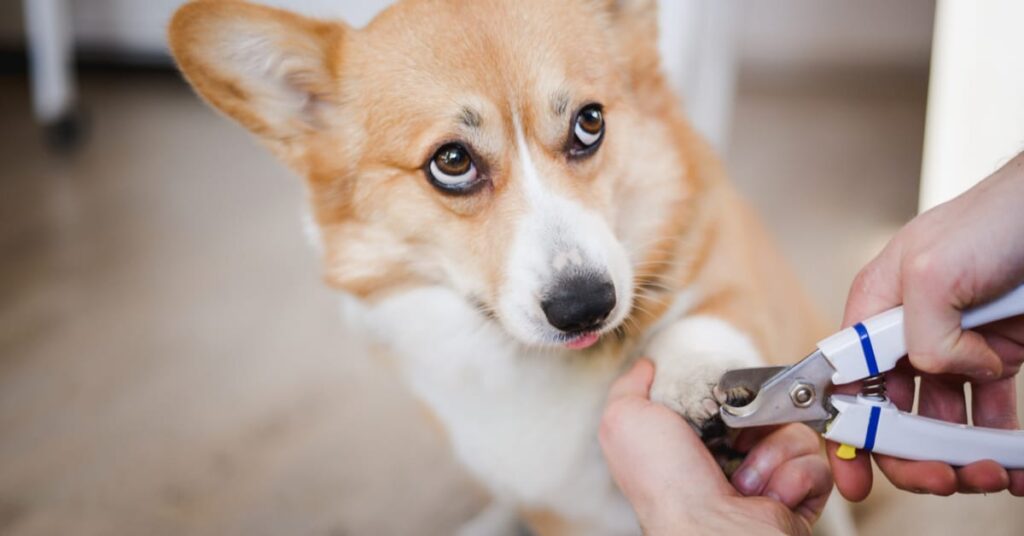
Be very careful when trimming your dog’s nails. Their front and rear paws contain blood vessels that are very painful when the quick is cut.
To avoid cutting the quick and learn how to trim your dog’s nails with confidence, read: How to Avoid a Bloodbath When Trimming Your Dog’s Nails.
Fun Fact #6: Dogs Walk on Their Toes

Unlike human dog owners, who bear more weight on their heels, dogs walk on their toes. This means they are what’s called a “digitigrade” mammal, an animal that walks on its toes without its heels touching the ground.
Protect Your Dog’s Paw to Ensure Overall Health & Wellness
Your dog’s paws, ligaments, tissues, bones, and nails all serve very important functions of being a dog! So next time you take your pooch out for a hike on rough terrain or catch them digging a hole in your yard, remember that evolution has its back.

